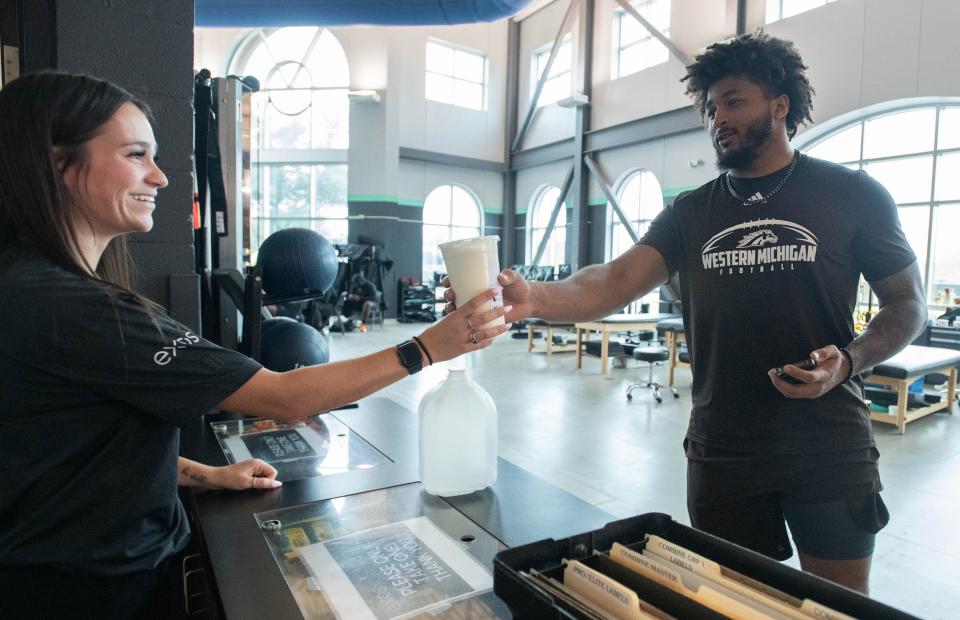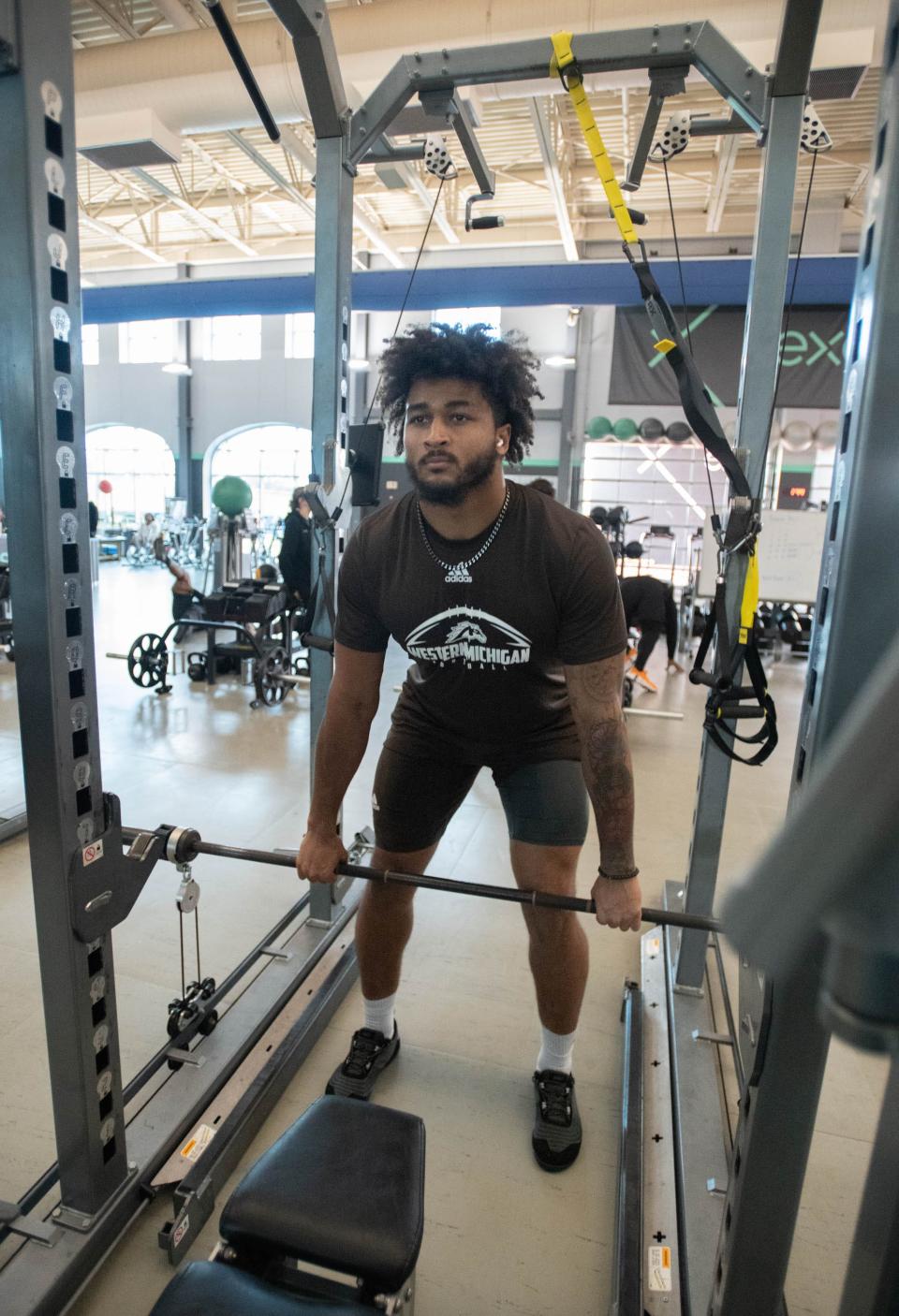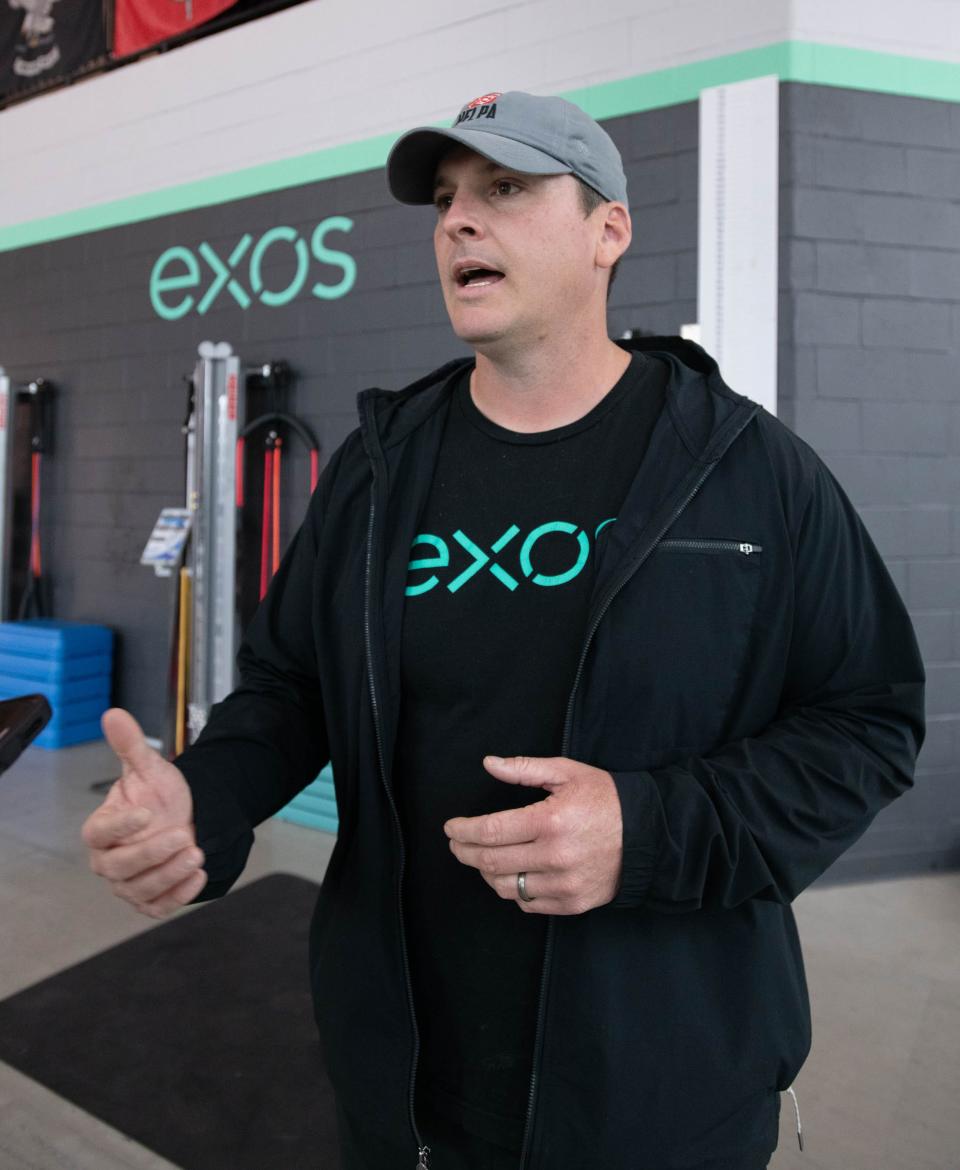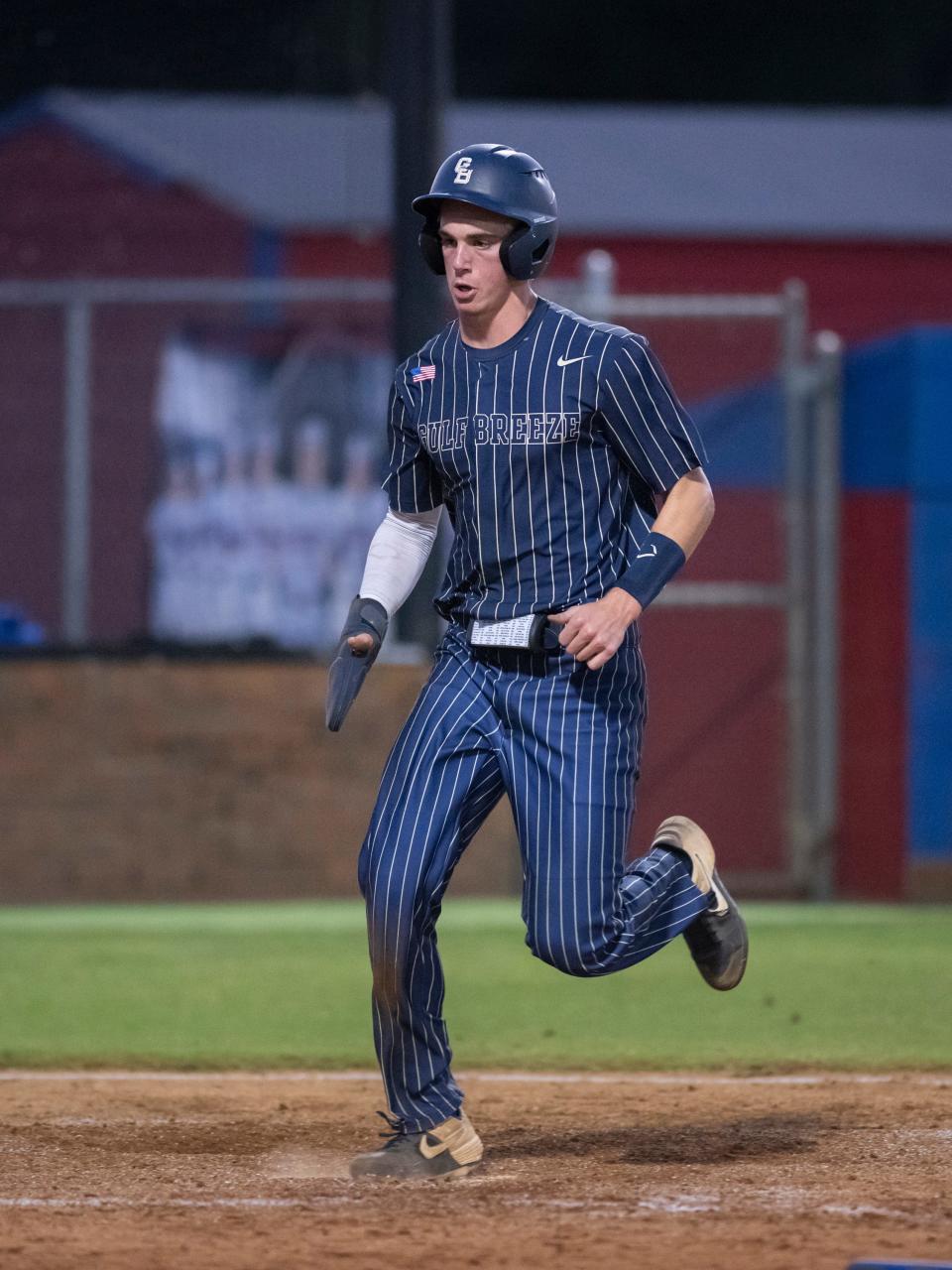Exos in Gulf Breeze provides 'elite' training for NFL Combine prospects, high school stars
If there’s one word to describe Exos, it’s “elite.”
The institute focuses on human performance. Whether it’s strength, speed, nutrition or mental, Exos has the total package to help those who want to live – or want to continue – an “elite” lifestyle.
Exos trains with those in special operations military units, people who are “extremely elite” in every aspect of their life, according to Anthony Hobgood, the senior director of performance at Exos.
“One of the things I learned working with those guys is that they are excellent all the time,” said Hobgood, who’s been at Exos for roughly 17 years after playing football at Ole Miss. “They’re very buttoned up in every part of their life, because they know if they need to operate at their job at an elite level, they can’t just be a slouch all the time then turn it on. It’s got to be something that becomes their identity.”
That “elite” mindset also spreads to helping some of the top college football players train for the NFL Combine, which will be in Indianapolis from Feb. 26 to March 3. Exos has gained a national reputation as a place for top pro football prospects to come train, among its three facilities in Scottsdale, Arizona; Frisco, Texas; and locally in Gulf Breeze.
Exos, under the guidance of Hobgood and the rest of the performance team at the facility on Gulf Breeze Parkway, is currently working with 49 of the best college football players get ready for the NFL Combine. It’s a number that’s “higher than normal,” but it’s a number that Hobgood called “right in the sweep spot” in terms of the capacity that Exos can hold.
Exos has been running NFL Combine training for over 20 years, and has now "developed a reputation" as one of the top places to prepare for the Combine, Hobgood added. Exos, among its three locations, is training just about a third of the entire NFL Combine invites, Hobgood said.
Training for the NFL Combine isn’t just about strength and speed. It’s a heavy focus – training for certain drills like the 40-yard dash, the shuttle drill, the vertical jump or the bench press – but there are aspects outside of lifting weights and running on the outdoor football field.
Exos puts a priority on nutrition and rehab, individualizing an athlete’s program down to how many calories they need a week, broken down by day and further separated by meals and snacks.
“We evaluate what they need from a performance standpoint, a body composition standpoint, then we put them on a meal plan,” Hobgood said. “We feed them, we train them, we help them recover, we treat them – we do all of that.”
Providing athletes a structure

From the day those top athletes arrive at Exos’ facility, they receive a sense of structure.
Given the state of college football, and the amount of staff members some of the top programs have, structure is all those athletes know. They’re told when to be somewhere, or how to do something, almost all day every day.
As soon as college players declare for the draft, they’re “kind of in limbo,” Hobgood said, deciding whether or not they train at school or train with a facility. That’s where Exos steps in, offering a “turn-key process.”
Players are housed at the Portofino on Pensacola Beach. They’re given a rental car. All of their food and nutrition is taken care of. All of the training happens at Exos’ facilities. Some athletes show up before the new year, especially if they didn’t play in a bowl game or had an injury that prevented them from playing.
But a majority of the players come in after the holidays and the “main part of the process” for NFL Combine training starts then.
“We need to create that structure for them here,” Hobgood said. “They can show up here on Jan. 2, and we take care of everything for two months. Then they show up in Indianapolis in a couple weeks to go perform.”
While Hobgood didn’t know the “nuances” of the financials of the program, he said he was “pretty sure” the cost of the program for the athletes is fronted by their agents as an “investment” in those athletes.
“It’s a great structure, and there’s a good plan. It’s basically the same thing every day,” said Marshawn Kneeland, who is training at Exos after playing college football at Western Michigan University. “Not too much changes day-to-day other than the actual training itself. It’s helped me improve a lot. …
“You come here, and everybody has the same mindset. Everybody wants to go to the NFL. Here, we all push each other because you never know who you’re going to be on the same team with.”
‘The Combine process’

With that mostly unchanging day-to-day process, Hobgood said there are three “primary phases” when it comes to training for the NFL Combine at Exos. There’s the installation phase, the strength phase, and then the taper phase.
“The training process is kind of like shaping the edge of a knife,” Hobgood said. “There’s the gross manipulation, then fine manipulation, then you want to really want to focus on the razor’s edge.”
But, before all of that comes to fruition, there’s an evaluation process. That’s where the Exos staff sees what each individual athlete needs. The staff gets data from performance metrics, physical therapy and nutrition.
“Some guys, to improve their speed, the biggest thing they can do is improve their body composition with their nutrition,” Hobgood said. “Other guys need to improve their back half of their (40-yard dash). Other guys need to focus on the front half. We’re going to hit all those things, but certain areas have the biggest return on investment more than the others.”
Through the nutrition process, Hobgood said Exos goes through an “anthropometric measurement” to determine the size and weight of an athlete’s skeleton. Between that and a body composition, that can create a muscle-to-bone ratio – meaning how much muscle there is in relation to the size of one’s skeleton.
Hobgood noted the “optimal ratio” is 5.2 to 5.5 kilograms of muscle for every 1 kilogram of bone.
“If you’re already above that number, putting on muscle could hurt your performance,” Hobhood said. “If you have less than that … then putting on muscle could improve your speed and performance.”
That’s where meals and smoothies/protein shakes are determined for each athlete. Kneeland, for example, while speaking to the PNJ, had just gotten his shake after his morning training session. It was vanilla along with pineapple or mango, “something citrus.”
“No banana. They gave me banana one time and I was like, ‘nah.’ I couldn’t do it,’” Kneeland said with a laugh. “I just don’t like it in shakes. I’d rather just eat a banana.”
During installation, Hobgood said it’s a lot of teaching and “how” athletes need to do things.
“We’re big on motivating through education,” Hobgood said. “If an athlete understands the ‘why’ behind what they’re doing, they’re going to have a lot better intent behind it with better outcomes.”
During the strength phase, that’s where the athletes “crank the intensity” in the training room.
Then comes the taper phase, which the athletes at Exos are currently in, where they are keeping the “intensity very high,” but cutting the volume in which they are doing it. That way the body has a chance to recover. Hobgood added the athletes focus on “quality not quantity” during the taper phase.
An athlete will be between 40% to 65% of the weight lifted during the strength phase, Hobgood said.
“They’re not going to be lifting a lot of heavy weight, but the weight they are lifting, they’re going to be lifting that with speed,” Hobgood said. “During the taper, we stop lifting things heavy and slow. We switch to lighter loads and higher speeds.”

A typical day, depending on which group the athletes are in, goes all morning into the early afternoon. Kneeland’s group, for example, wakes up at 6 a.m. and gets to the facility around 7 a.m. to have breakfast at Legends Café, located in the facility.
Training begins around 8 a.m. for speed training, followed by a break for treatment or physical therapy. Lunch is around 11 a.m., then they have another break for some “downtime,” where players might take naps or hang around. Then they’ll have strength training in the afternoon. After 2:30 p.m., the rest of the day is theirs to recover.
“They have us in the Portofino. … The sand is crazy soft (on the beach). I’ve never experienced something like that. I’ve enjoyed my time going there,” said Kneeland, who hails originally from Michigan. “It’s a beautiful city. I like cruising around from time to time, just sightseeing.”
Wednesdays is the only change, where in the afternoon it’s more of a recovery session, Hobgood said.
There are some days where there’s training outside of the physical stuff – getting ready for interviews with teams or practicing for the Wonderlic test, testing a player’s problem-solving abilities.
“The responsibility to take care of yourself is on you. There’s no one calling you to wake up and go to a meeting. It’s on you to go do that,” Hobgood said. “You’ve got to take the responsibility in order to things that make you an elite athlete. We provide structure, but it’s their responsibility to take responsibility of themselves.
“They understand that being a pro is something that has to take over their life every day. It’s not just what they do in the training in the building or at practice. … You can’t just turn that on when you need to. It needs to become their identity.”
It’s not just for pro athletes

The reason Hobgood got into the business was because of the relationships he can build with athletes. He’s worked with several athletes who have gone on to the professional ranks, including Navarre’s Michael Carter, who is currently with the Arizona Cardinals.
Navarre’s Jordan Jefferson, who played at West Virginia and LSU and has also been invited to the NFL Combine, has been training at Exos as well. Both Carter and Jefferson trained at Exos while they were in high school, and Hobgood added “it’s really cool to see them come full circle” from high school to professional football.
“We don’t take credit for the success. Michael Carter has done what he’s done because of him and his family. Not because of us,” Hobgood said. “But to know that you were a small support system during somebody’s journey, you feel like a family member that is clapping and saying, ‘Well done.’ You’re just excited for them.”
Some of those relationships build with young athletes, who might be in high school or even younger. While training is sometimes different with younger athletes – focusing on the fundamentals of training rather than a “hyper-specific specialized training” like the elite athletes.
Hobgood said they put younger athletes on a “long-term athlete development model,” or an “LTAD.” Those younger athletes work with a specific coach, Austin Periera, who also trains coaches the elite athletes but “has a heart and passion working with youth athletes,” Hobgood said.
One of those young athletes is Brock Clayton, a senior on the Pensacola Catholic baseball team, who is headed to the University of Florida next year.
While he’s currently not training at Exos because of baseball beginning this week for the FHSAA, Exos helped him recover from an injury while building up for baseball.
“Exos built me up to the strongest I’ve ever been. … I’m able to see a lot more power whenever I hit the ball now,” Clayton said. “They’re doing stuff that the college level is doing. They’re basically preparing me for that. It’s good to get used to it, and to get those same workouts going now instead of getting dropped right in there. I’m ready to go now.”
Clayton appreciates that he gets the same coaching as those elite athletes, and it makes him “feel like a top-tier athlete.”
“I think Exos made me better as an athlete. I’ve never met an athlete who doesn’t want to get better,” Clayton said. “Exos is what you should be doing if you want to play at the next level.”
“The high school athletes that train here, they train with the same coach that trains our elite athletes. I don’t know if Pensacola knows that this is here,” Hobgood said. “If you think about it, if you wanted to train here, there’s only three locations in America like this. One of them is right here in Gulf Breeze.”
Ben Grieco is a sports reporter for the Pensacola News Journal. He can be reached on X (@BenGriecoSports) and via email at BGrieco@gannett.com.
This article originally appeared on Pensacola News Journal: Gulf Breeze's Exos trains NFL Combine prospects with 'one stop shop'
